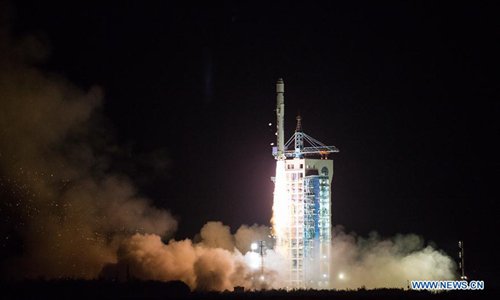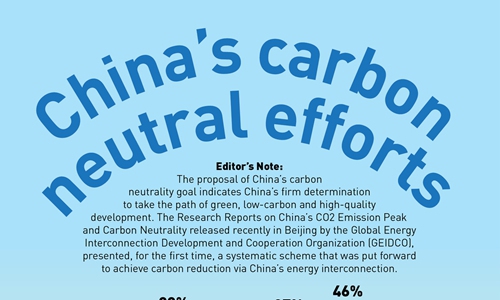SCI-TECH / AIR & SPACE
China's CO2 satellite yields country's first global carbon flux dataset
Milestone makes nation third in world to monitor global carbon budget from space

The Long March-2D rocket carrying a carbon dioxide monitoring satellite blasts off from the launch pad at the Jiuquan Satellite Launch Center in Jiuquan, northwest China's Gansu Province, Nov. 22, 2016. This was the 243rd mission of the Long March series rockets. Besides TanSat, the rocket also carried a high-resolution micro-nano satellite and two spectrum micro-nano satellites for agricultural and forestry monitoring. (Xinhua/Ren Hui)
Chinese scientists are contributing their wisdom to global and national efforts to slow down climate change, as they have recently compiled China's first global carbon flux dataset based on high-quality data collected by the country's first carbon dioxide (CO2) monitoring satellite, the Global Times learned from the project leader on Monday.
The breakthrough means that China has become the third country with the ability to quantitatively monitor the global carbon budget from space. The satellite, commonly known as TanSat, has proven it can perform the task as brilliantly as those from Japan and the US, Yang Dongxu, a fellow researcher with the Institute of Atmospheric Physics under the Chinese Academy of Sciences (CAS) and also the chief scientist of the project, told the Global Times on Monday.
This significant result has been published in the journal Advances in Atmospheric Sciences.
China's first global carbon flux dataset, derived from TanSat measurements, covers the period from May 2017 to April 2018. Chinese scientists came up with a complicated and original methodology at the processing stage, including retrieval and data assimilation from TanSat spectral measurements and CO2 concentrations in the atmosphere to track carbon flux, Yang revealed.
"The processing stage took Chinese scientists around three years before they published the final product, and in the future it will take less time, as they have found a feasible path."
The estimated result based on the Chinese satellite is roughly consistent with that using Japan's GOSAT and US OCO-2 satellites, which demonstrates that China's first CO2 monitoring satellite possesses equally good capability to quantitatively monitor the global carbon flux, according to Yang.
CO2 is an integral part of the Earth's atmosphere and is considered as a prime cause of climate change and the primary greenhouse gas emitted through human activities.
Therefore, monitoring emissions on a global scale against one universal standard is a constructive method to assess how each country is contributing to the slowing down of climate change, Wang Jing, one of the scientists behind the the dataset, noted.
Such a dataset will not only be shared among scientific circles around the world, but will also assist clients from government agencies in their work involving local carbon management, Yang explained.
Data from the TanSat and products such as the dataset will be shared freely with the world through theChina Group on Earth Observations TanSat Data Service Archive, Yang said.
China Group on Earth Observations TanSat data service archive, Yang said.
According to the Paris Agreement, a first "Global Stocktakes" will take place in 2023 and every five years thereafter, in a bid to assess collective progress toward achieving the purpose of the agreement in a comprehensive and facilitative manner. It will be based on the best available science and its long-term global goal. The outcome will inform parties in updating and enhancing their actions, and in supporting and enhancing international cooperation on climate action.
Liu Yi, the group leader and co-investigator of the TanSat scientific application, revealed the products from the TanSat and next-generation TanSat mission (TanSat-2) data will become key references to the "Global Stocktakes" event, as regulated by the Paris Agreement.
China launched TanSat - its first satellite to monitor greenhouse gas emissions - in December 2016, and vowed to freely share the data with the international community.
A series of satellites for CO2 monitoring are expected to be built during China's 14th Five-Year Plan period (2021-2025) amid the country's efforts to peak CO2 emissions before 2030 and go carbon neutral before 2060.
One of the new satellites will be mounted with a LiDAR (light detection and ranging) system to monitor CO2 in the atmosphere, which will be the first of its type in the world, according to Zhang Xinying, a senior researcher with the National Satellite Meteorological Center.
Yang said he and his colleagues in the institute are working on the design for the TanSat-2 mission for carbon budget monitoring purposes, and the new generation will possess improved monitoring capability and better data processing power.
The TanSat-2 mission will monitor global carbon budgets in coordination with other new satellite missions around the world, continuing the international collaboration that has been established at the TanSat stage.



